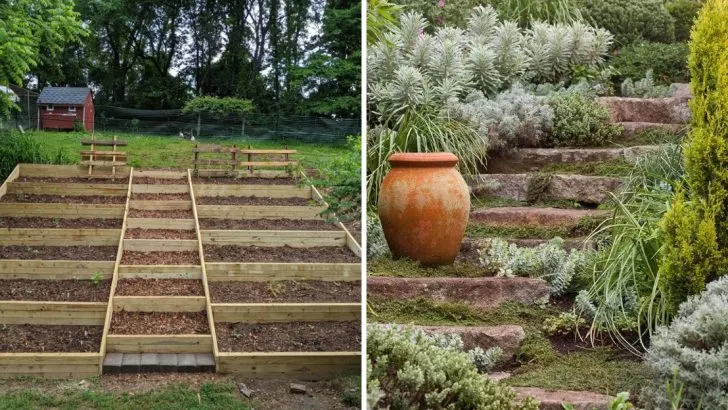Transforming a sloped yard into a functional and beautiful space can be a rewarding challenge. With the right design strategies, you can turn uneven terrain into a stunning feature of your landscape. Whether you’re looking to create multiple levels, improve drainage, or add eye-catching focal points, these 8 ideas will help you make the most of your sloped yard.
From terracing and retaining walls to creative plantings and outdoor living spaces, discover how to blend practicality with beauty in your sloping garden.
Terraced Garden
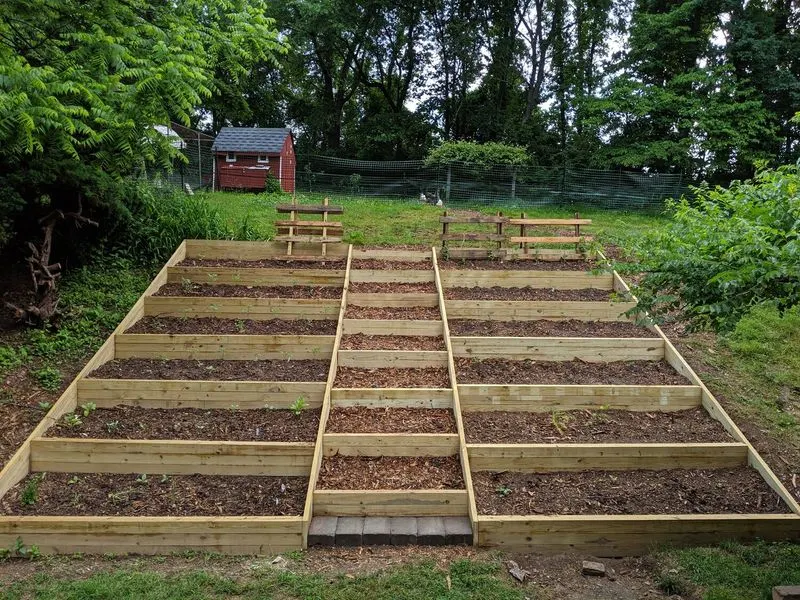
Transforming a sloped yard into a terraced garden not only maximizes space but also adds visual interest with its layered effect. The tiered design helps in soil erosion control while offering distinct planting zones. Imagine growing herbs in one tier and vibrant flowers in another, creating a cascading effect of colors. Each terrace can be customized according to your needs, be it for vegetables, flowers, or even a seating area. With careful planning, the terraces become a beautiful blend of form and function, offering both a utilitarian and scenic landscape. It’s a practical solution with aesthetic appeal.
Water Feature Installation
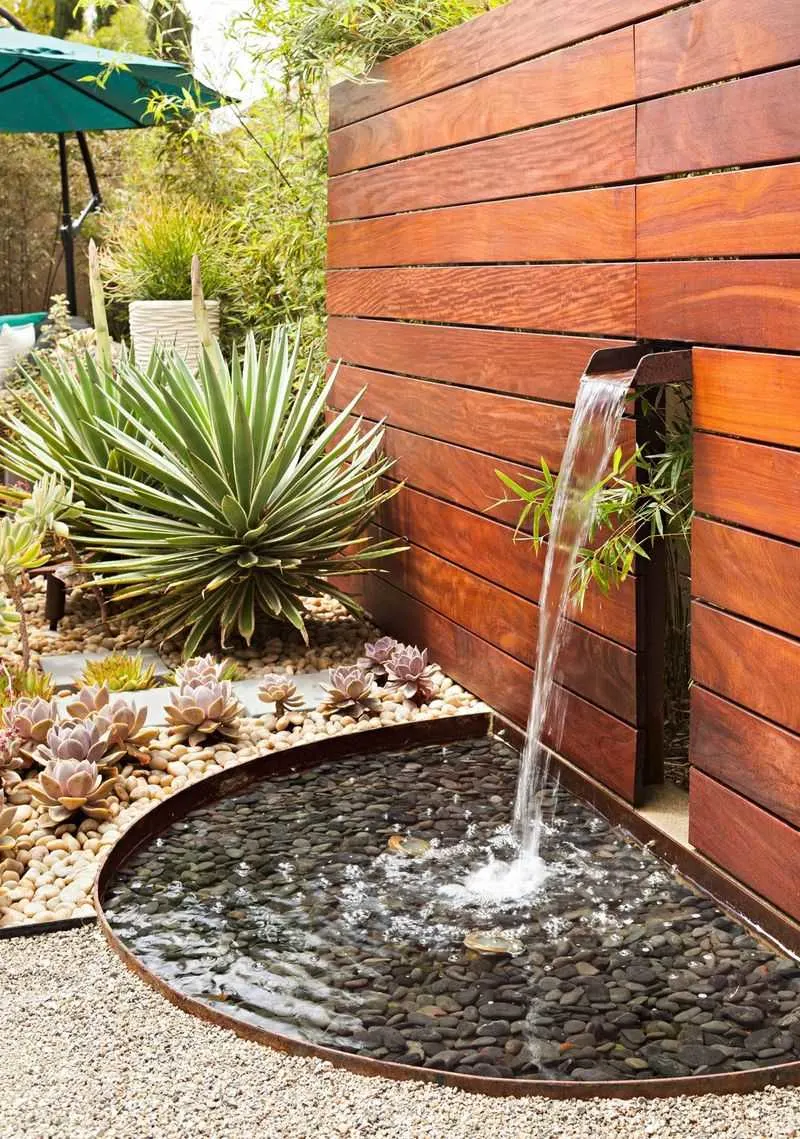
Introducing a water feature can turn a slope into a serene retreat. The natural incline is ideal for a cascading waterfall or stream, adding a soothing soundscape to your garden. Water features are not only pleasing to the eye but also attract wildlife, enhancing the ecological value of your yard. Consider incorporating native plants around the feature to create a harmonious scene. This installation becomes a focal point, drawing attention and providing a tranquil escape. The gentle flow of water against the backdrop of greenery adds a dynamic touch, making your yard a peaceful haven.
Retaining Walls
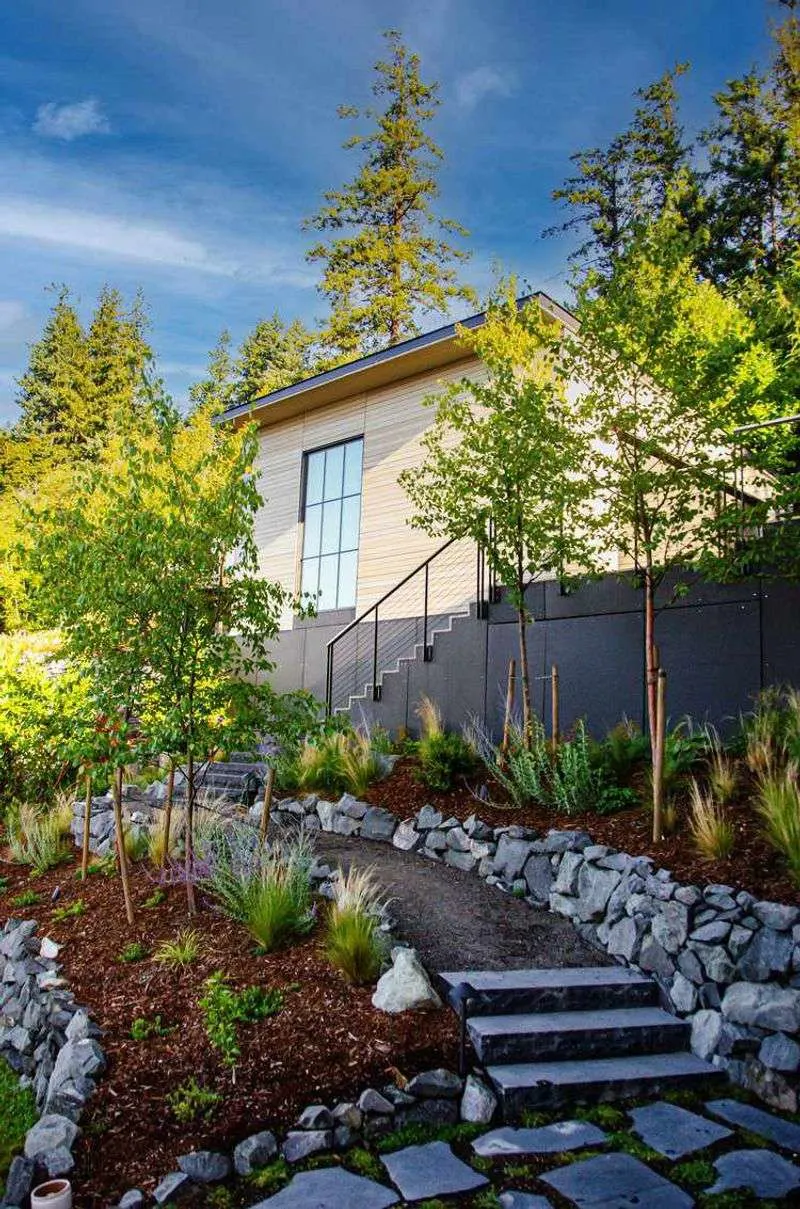
Retaining walls are a smart way to manage steep slopes, preventing soil erosion and creating usable space. Choose from an array of materials like stone or wood to match your style. These structures not only stabilize the land but also offer opportunities for raised garden beds or seating. A well-crafted retaining wall can enhance the architectural aesthetic of your outdoor space. It integrates functionality with style, transforming previously inaccessible areas into inviting landscapes. Incorporating plants along the wall softens the look, blending nature with structure seamlessly, and providing a balanced, appealing environment.
Pathways and Steps
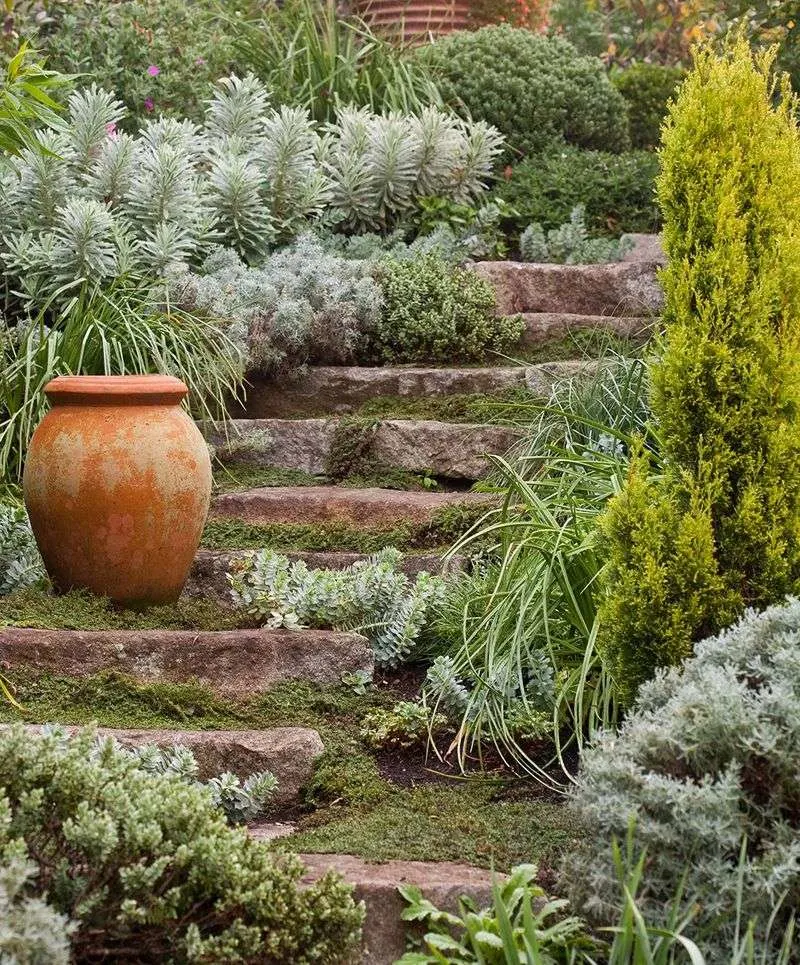
Creating pathways and steps offers a practical way to navigate a sloped yard. These elements guide visitors and define different areas within the garden. Opt for materials like stone or wood to complement the natural environment. The design can be a simple straight path or more elaborate with curves and landings, depending on the slope’s gradient. Adding plants alongside enhances the pathway’s charm, providing a sensory experience with varied textures and scents. This approach not only improves accessibility but also adds a rhythmic flow to the landscape, making the yard more inviting and coherent.
Native Plant Landscaping
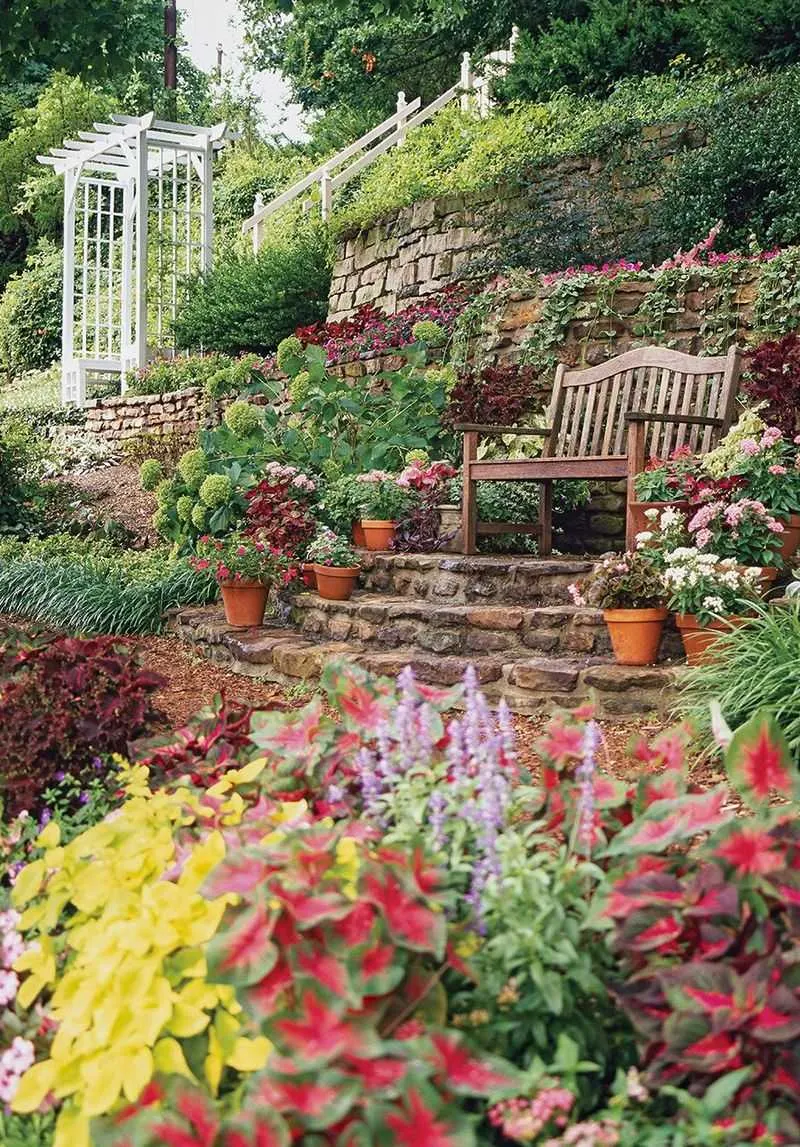
Using native plants on sloped terrain offers sustainability and minimal maintenance. These species are adapted to local conditions, requiring less water and care, making them ideal for challenging landscapes. Native plants can help prevent erosion with their robust root systems, stabilizing the soil effectively. Arranging them strategically creates a balanced ecosystem that supports local wildlife, attracting birds and pollinators. The variety of textures and colors adds depth and interest to the yard. This eco-friendly approach ensures a thriving landscape that resonates with the natural beauty of the region, offering both function and grace.
Outdoor Seating Areas
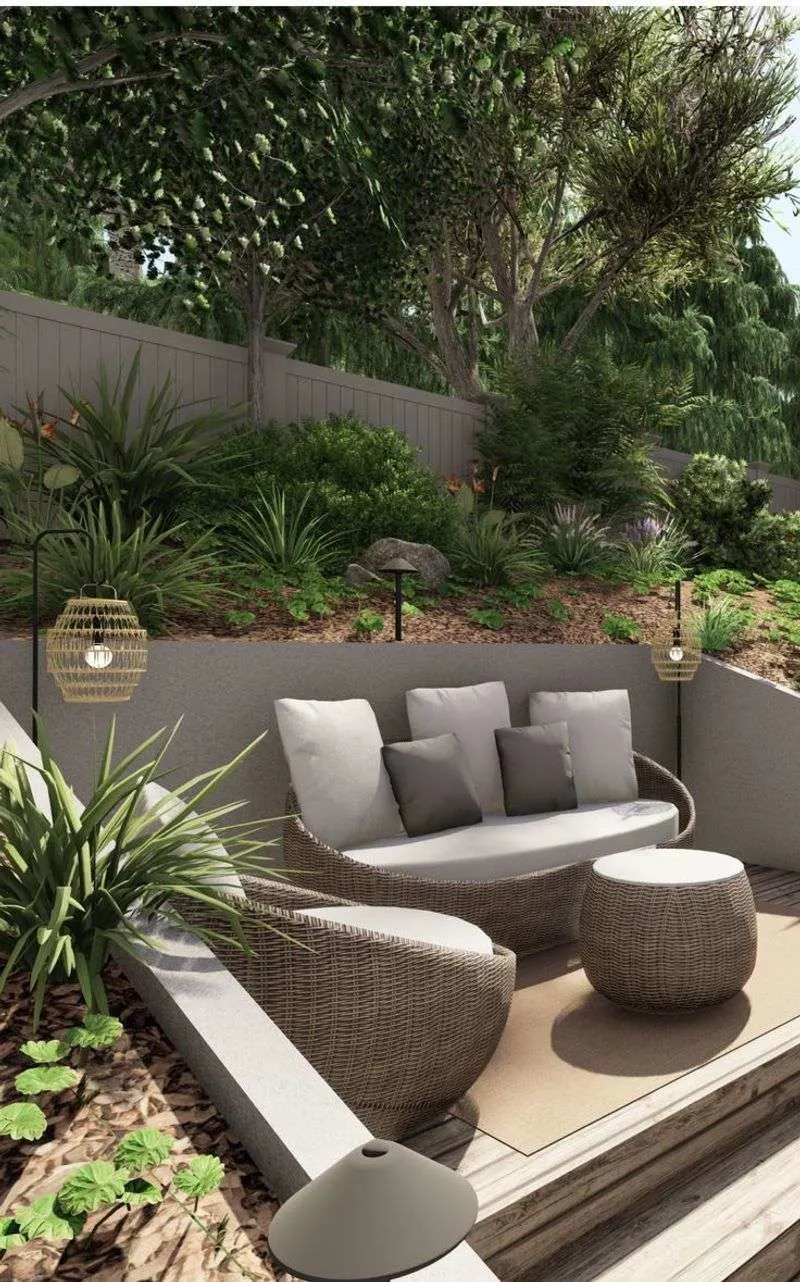
Creating outdoor seating on a slope can transform the area into a social hub. With thoughtful design, sloped spaces can offer unique vantage points for viewing the landscape. Consider building platforms or decks that nestle into the hill, providing flat surfaces for seating. Integrate comfortable furniture and possibly a fire pit for warmth and ambiance. Such areas become ideal spots for relaxation and entertainment, adding value to your yard. The strategic placement ensures privacy while making the most of the views, offering a perfect blend of comfort and nature in one harmonious setting.
Vegetable Garden on a Slope
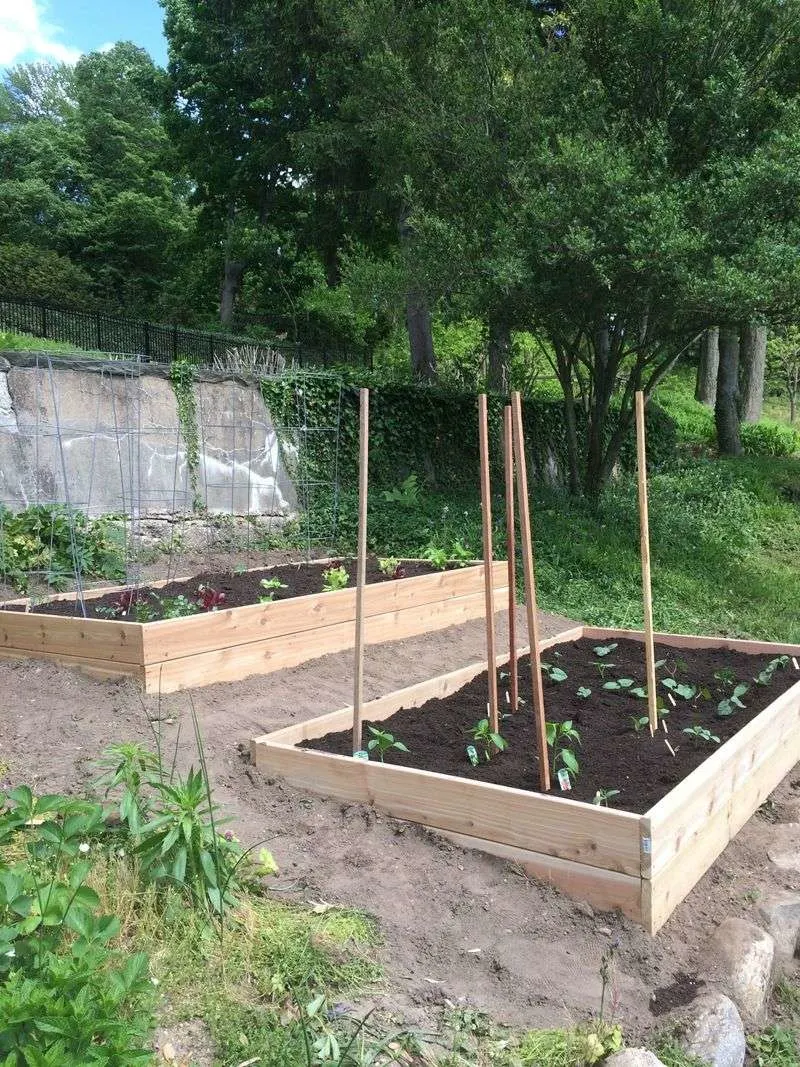
Growing vegetables on a slope can be rewarding with the right techniques. Use raised beds to create level planting areas, which aid in water drainage and soil retention. This method allows for easy access and maintenance, even on an incline. Consider planting vegetables in rows aligned with the slope to maximize sunlight exposure. This setup not only provides fresh produce but also turns the slope into a productive landscape. The visual appeal of neat rows of vegetables adds order and charm to the yard, making it both a practical and beautiful endeavor for gardening enthusiasts.
Wildlife Habitat Design
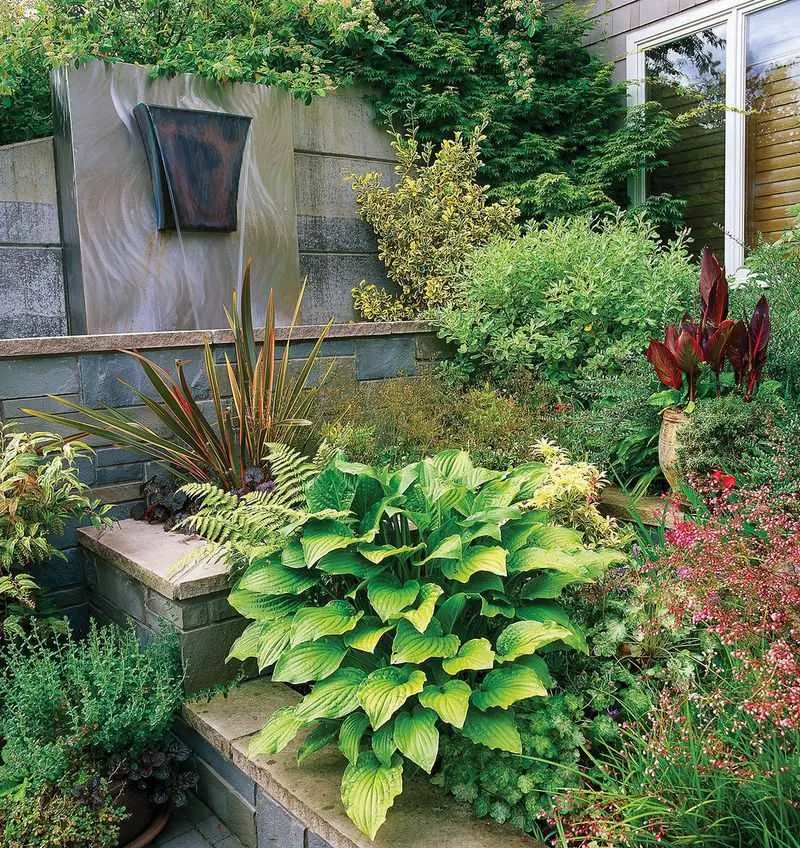
Designing a wildlife habitat on a slope invites biodiversity to your yard. Incorporate elements like birdhouses, native plants, and water sources to attract various species. The slope can naturally divide the habitat into different zones, each supporting different wildlife. This approach not only enriches the local ecosystem but also provides an educational space for observing nature. The presence of wildlife adds life and movement to the garden, creating an engaging environment. By fostering a habitat, you contribute to conservation efforts while enjoying a dynamic and lively landscape that changes with the seasons.

